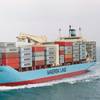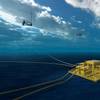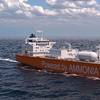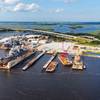The U.S. Navy announced that one of its nine Nimitz-class
aircraft carriers will replace the USS Kitty Hawk as the forward deployed carrier
in the Western Pacific, and will arrive in Yokosuka, Japan in 2008.
The USS Kitty Hawk is nearing the end of its service life and will
return to the United States in 2008 to be decommissioned.
The United States values Japan's contributions to the peace, security
and stability of the Asia-Pacific region and its long-term commitment and
hospitality in hosting U.S. forces forward deployed there. These forces, along
with their counterparts in the Japn Self-Defense Forces, make up the core
capabilities needed by the alliance to meet our common strategic objectives.
Additionally, the forward deployment of a Nimitz-class aircraft carrier
ensures the ability of commander, U.S. Pacific Fleet to fulfill the U.S.
government's commitment to the defense of Japan, and the maintenance of
international peace and security in the Far East in support of the treaty of Mutual
Cooperation and Security.
The security environment in the Western Pacific region increasingly
requires that the U.S. Navy station the most capable ships forward, from
established forward-deployed positions. This posture allows the most rapid
response times possible for maritime and joint forces, and brings our most capable
ships with the greatest amount of striking power and operational capability to bear
in the timeliest manner.
This ship rotation will not necessitate a change in the assigned
airwing, nor in the compostion of the airwing. Carrier Air Wing Five will remain
the forward-deployed air wing.
This ship rotation is part of the Navy's long-range effort to routinely
replace older ships assigned to the Navy's forward deployed naval forces with newer
or more capable platforms, and is part of an ongoing effort to consider the nature
of all forward deployed forces when looking at the unpredictable security
environment in the Western Pacific.
The U.S. Navy values the friendly relations it enjoys with its host
cities in Japan, and will continue it strong and positive engagement with its host
nation neighbors.
Since 1964, U.S. nuclear-powered warships have visited Japanese ports
more than 1,200 times. From the beginning, the U.S. has provided firm commitments
to the Government of Japan regarding the safe use of Japanese ports by U.S. nuclear
powered warships and confirmed that all safety precautions and procedures followed
in connection with operations in U.S. ports will be strictly observed in foreign
ports. That commitment remains firmly in place
Featured videos

Taking the First Step Toward Autonomy

Send in the Drones (to deep, dark, confined maritime spaces)
Subscribe for
Maritime Reporter E-News
Maritime Reporter E-News is the maritime industry's largest circulation and most authoritative ENews Service, delivered to your Email five times per week











